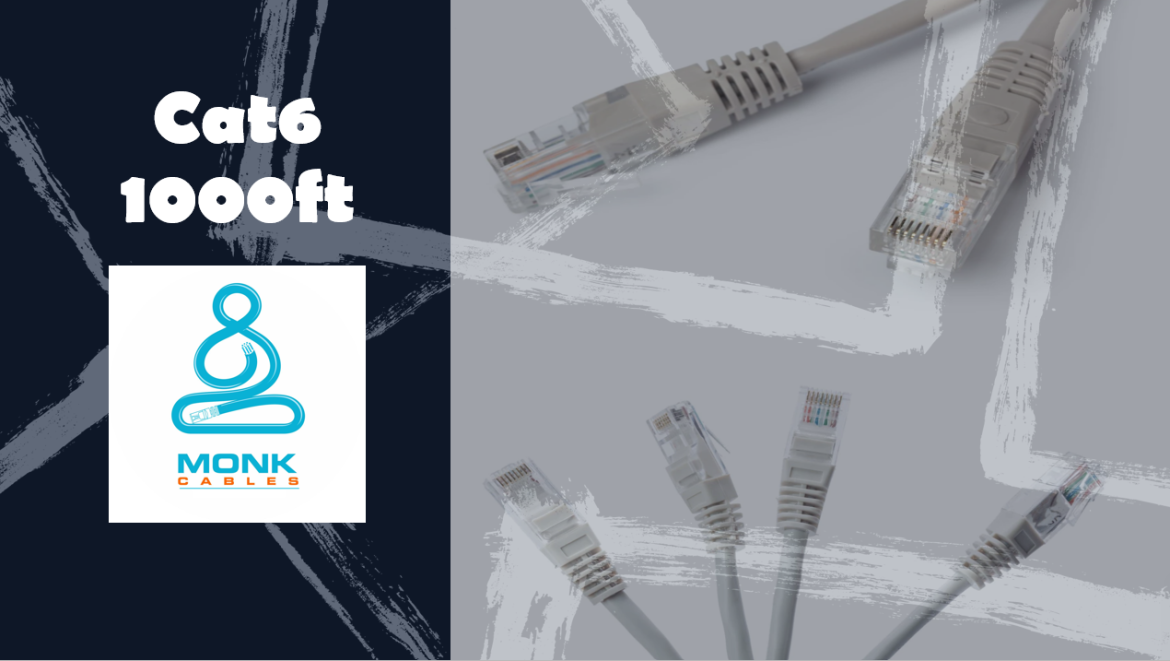If you’re in the process of setting up a home or business network, one of the most important decisions you’ll need to make is choosing the right Cat6 1000ft cable. With a variety of options available, it can be overwhelming trying to determine which type of cable is best for your needs. In this blog post, we’ll provide a comprehensive overview of Ethernet cables, including different categories, benefits and potential drawbacks, and factors to consider when making your decision. By the end, you’ll have a better understanding of how to choose the right Ethernet cable for your home or business network.
Introduction to Ethernet Cables
Before we dive into the specifics of Ethernet cables, it’s important to understand some key terms. “Ethernet” refers to a type of networking technology that is used to connect devices within a local area network (LAN). Cables are a crucial component of Ethernet networking, as they are used to transmit data between devices.
There are several different categories of Ethernet cables, including Cat3, Cat5e, and Cat6. Higher numbers indicate a higher performance level, and each category is designed to support different data transfer speeds. For example, Cat3 cables are capable of supporting speeds of up to 10 Mbps (megabits per second), while Cat5e cables can support speeds of up to 1 Gbps (gigabits per second). Cat6 cables, on the other hand, are designed to support data transfer speeds of up to 10 Gbps, making them suitable for use in modern homes and businesses that rely on high-speed internet.
Benefits and Potential Drawbacks of Different Ethernet Cables
When choosing an Ethernet cable, it’s important to consider the benefits and potential drawbacks of each type. Cat3 cables, for example, are the most basic and economical option, but they are only suitable for use in basic networking applications and may not be able to support high-speed internet or bandwidth-intensive activities. Cat5e cables, on the other hand, offer improved performance over Cat3 cables and are suitable for use in most home and business networking applications.
Cat6 cables offer the highest performance level of the three categories and are suitable for use in high-speed internet and high-traffic areas. However, they tend to be more expensive than Cat5e or Cat3 cables and may not be necessary for all applications. It’s important to carefully assess your specific needs and budget before making a decision.
Factors to Consider When Choosing an Ethernet Cable
There are several factors to consider when choosing an Ethernet cable for your home or business network. One of the most important is data transfer speed. If you rely on high-speed internet for tasks such as streaming high-definition video or online gaming, a higher-grade cable such as Cat6 Plenum may be necessary.
Another factor to consider is compatibility with networking equipment. It’s important to make sure the cable you choose is compatible with your router, modem, and other networking equipment. You’ll also want to consider the length of the cable. While longer lengths can be beneficial in certain situations, they can also make the cable more difficult to work with and may increase the chances of signal degradation over long distances.
Easy Installation and Maintenance
Once you’ve chosen the right Ethernet cable for your home or business network, the next step is installation. Ethernet cables are available in a variety of lengths and can be purchased in bulk spools or pre-terminated options, making it easy to find the right solution for your specific needs. Additionally, most Ethernet cables are relatively easy to install and are compatible with a wide range of networking equipment.
Proper maintenance is also important for ensuring the longevity and performance of your Ethernet cable. Here are a few tips for maintaining your cable:
- Keep the cable away from sources of interference, such as fluorescent lights, power cords, and appliances.
- Avoid bending or crimping the cable, as this can damage the wires and reduce performance.
- Regularly check the cable for visible damage, such as frayed wires or exposed insulation.
- If you need to make any repairs or modifications to the cable, make sure to use the proper tools and techniques to avoid damaging the cable further.
Conclusion
In conclusion, choosing the right Ethernet cable is an important decision when setting up a home or business network. Different categories of cables, such as Cat3, Cat5e, and Cat6, offer varying performance levels and are suitable for different types of applications. It’s important to carefully assess your specific needs and budget before making a decision. Consider factors such as data transfer speed, compatibility with networking equipment, and cable length to determine the best fit for your home or business network. With the right Ethernet cable, you’ll be able to enjoy reliable and high-performing networking capabilities.

